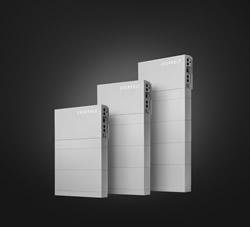NACo and DWEA Release County Wind Ordinance Best Practices Guide
The guide serves as a tool for county elected officials and planners to learn about local wind ordinance development, explore key ordinance criteria, and consider best practices from other counties.
Washington, D.C., Dec. 19, 2012 - The National Association of Counties
guide that details best practices to assist counties in developing effective
county wind ordinances.
The report, County Strategies for Successfully Managing and Promoting Wind
Power, is the result of a NACo and DWEA partnership to assist county leaders
and the wind industry in working collaboratively to develop affordable and
safe wind energy projects that respect property rights and promote economic
growth.
The guide serves as a tool for county elected officials and planners to
learn about local wind ordinance development, explore key ordinance
criteria, and consider best practices from other counties. For example, the
permitting process is often a daunting obstacle for counties, wind
developers, and would-be consumers to develop. Few counties have added
allowances for wind systems - even small-scale - to their zoning codes. In
some places, unfamiliarity with wind technologies has resulted in a complete
restriction of wind development to avoid setting a controversial precedent.
The guide explains key differences in wind system technologies and cites
best practices for distributed wind in areas, such as rotor and turbine
height, lighting, and safety. It features detailed case studies from several
NACo member counties, including:
. Linn County, Iowa
. Tippecanoe County, Ind.
. St. Lawrence County, N.Y.
. Fillmore County, Minn.
. Rockingham County, Va.
"Wind energy is an opportunity for counties to move their communities toward
clean renewable energy and local jobs," said NACo Vice President, Linda
Langston, supervisor, Linn County, Iowa. "The information in the guide
should be very helpful for county leaders as they look toward clean economic
development options."
Jennifer Jenkins, executive director, Distributed Wind Energy Association,
said, "We are pleased to partner with NACo on this report and view it as a
critical next step for gaining the understanding and trust of county
officials across the U.S. We are hopeful that this information will help
continue an informed dialogue between our industry and the counties our
members serve."
Featured Product

EVERVOLT home battery storage: Standby power with or without solar
Renewable energy stored in an EVERVOLT home battery system is the perfect backup plan against an uncertain utility grid and weather events. Run key appliances longer and live life when the unexpected happens. EVERVOLT battery storage systems are covered by a complete 12-year warranty from Panasonic.
